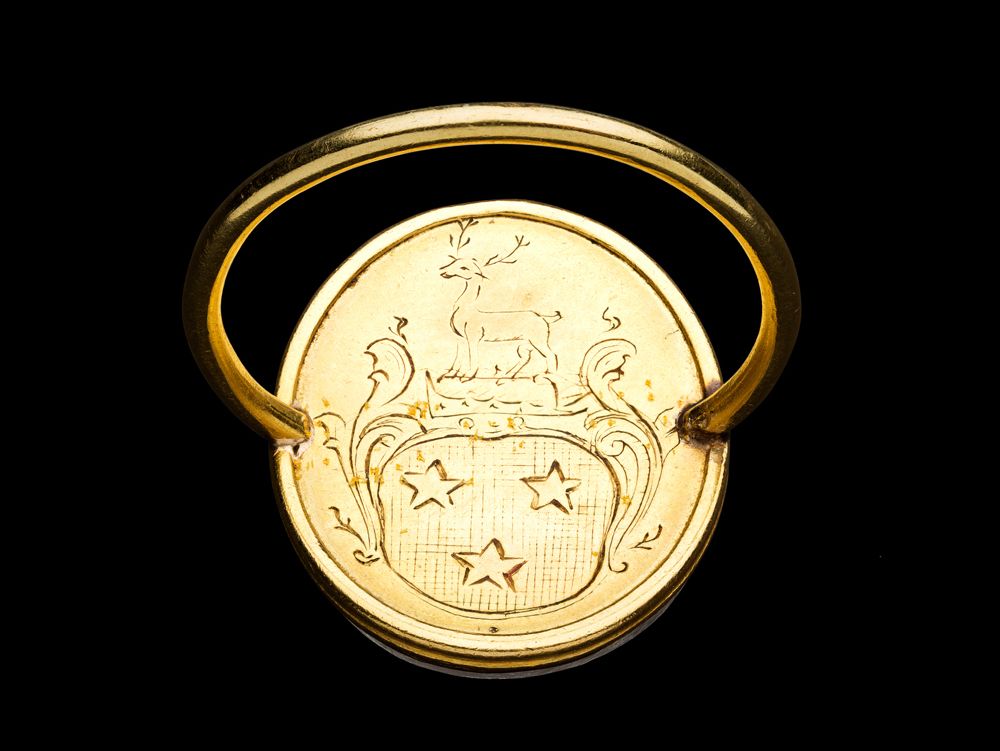Supporting the Cause
Portrait rings and other jewellery have been recorded as used and gifted by the Stuart Royal family from as early as King Charles I, to commemorate his execution, to the restoration of King Charles II.

2 May 2018
Lyon & Turnbull
Portrait rings and other jewellery have been recorded as used and gifted by the Stuart Royal family from as early as King Charles I, to commemorate his execution, to the restoration of King Charles II.
This medium was seldom used by the Jacobite court, although some very rare portrait rings of Prince Charles from the mid-18th century and later are known. Much Jacobite jewellery consists of later supporters' jewellery, rather than period pieces, and are not as closely connected to the Court, such as this. This ring is a very rare and early example, depicting the Old Pretender and likely dating to the uprising of 1715 when King James was still the figurehead of the Jacobite cause.
The portrait featured was a favourite of the Stuart Court, commissioned by Mary of Modena in 1712, before James left the court of Saint-Germain, and she moved into a Convent. The year 1712 was a major year for the Jacobite cause: it seems likely it saw an increase in propaganda and networking, ensuring supporters would not forget the cause and the part James needed them to play in any future uprisings, after the failed attempt of 1708.

The portrait was commissioned from Alexis-Simon Belle by Mary to match one of Princess Louise-Marie by the same artist and and one of King James II by de Troy. The portrait of James was seen of such importance that it was immediately sent to be copied (in full size and miniature) and engraved, before being sent to followers in England and Scotland. Indeed, the portrait was such a success that it became James' official portrait until his death.
The portrait shows James in armour, a veteran of three military campaigns, and with his sash of the Order of the Garter, showing his claim to his Royal lineage. However it never represented him with a crown or titled him as King. It is considered that this symbolism showed his claim would come to pass. In effect his right was undeniable, and on the death of Queen Anne it was assumed the title of King would pass directly to him, however the armour depicted in this portrait suggests that military action would be needed, and not shied away from. This perhaps seems a little basic, as the grip on power in Britain had forced James to move court from Saint-Germain to Lorraine as it was not considered French, and British relations could continue peacefully with his presence there. This all came to a head with the signing of the Treaty of Utrecht which James had naively thought would confirm his right, rather than further demote it.

The ring offers further insight into this key period of Jacobite tension, support, planning and uprising by the engraved armorial - engraved with the coat of arms of sable, three mullets argent with crest upon a chapeau, gules turned up, ermine, a buck statant proper attired, for the Puleston family of North Wales - to the reverse, showing the spread of support for the exiled King James and the names connected with this.
The Puleston family held estates in North Wales in Denbighshire and Flintshire, both considered hotbeds of Jacobite support and activity. North Wales and the areas closely surrounding their estates were the site of the famous Jacobite Cycle and White Rose clubs, and it is recorded that many of the Puleston family were active members.
Founded on 19th June 1710, the anniversary of the Old Pretender's birthday, The Cycle Club continued for over 150 years. It's name nodded to the fact that meetings were alternately held in members' houses. It seems very likely this ring would have been worn and present at these meetings, and its significance known to the members.
The Cycle Club are one of the few societies which can claim an active part in the uprising of the '45. They marched to meet Charles's army in England with men, money and supplies, but by the time they reached Derby, the Highland army was on retreat. In quick succession, they returned to Wales where the incriminating plans and papers were destroyed, meanwhile the club continued. Although it has not been possible to find a list of members who marched to meet Charles it is highly likely the Puleston family were within the ranks.
Literature:
Forsyth, D., 'Bonnie Prince Charlie and the Jacobites', National Museum of Scotland, 2017;
Corp, Edward, 'The King Over The Water, portraits of the Stuarts in Exile after 1689', Scottish National Portrait Gallery, 2001